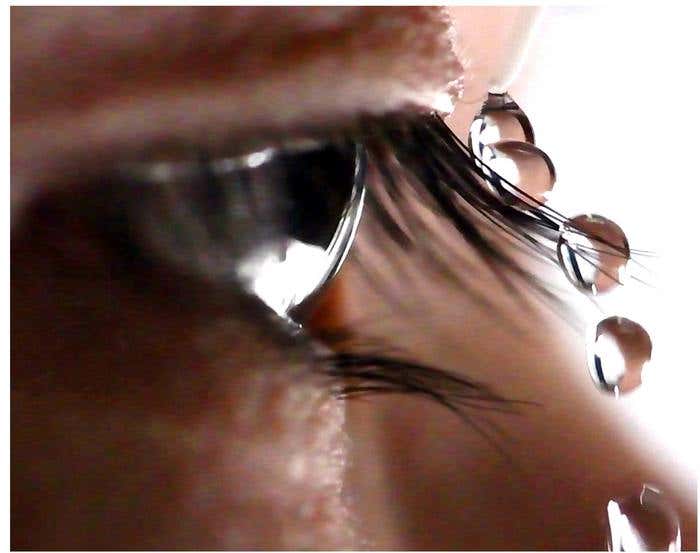Surprising discovery connects skin tone, genetic ancestry and skin cancer
Researchers embarked on a fascinating journey to unravel the genetic origins of variations in skin pigmentation between various ethnicities

[Oct. 28, 2023: Staff Writer, The Brighter Side of News]
Findings reshaped our understanding of this topic, especially when considering the skin coloration of people of East Asian and Native American descent. (CREDIT: Creative Commons)
The vast diversity of human skin colors has long been an enigma in the world of science. Researchers from Penn State have embarked on a fascinating journey to unravel the genetic origins of variations in skin pigmentation between various ethnicities.
Their findings, as documented in the eLife journal, have reshaped our understanding of this topic, especially when considering the skin coloration of people of East Asian and Native American descent.
Discovering the Genetics of Skin Color
"People have always been intrigued by the connection between skin pigmentation and ethnicity," explained Keith C. Cheng, distinguished professor at Penn State. "But our team has discovered that the genetic basis is more intricate than we previously thought."
Related Stories:
The research confirmed that the genes associated with East Asian and Native American ancestry are responsible for their lighter skin tones, and not the genes that give Europeans their lighter skin. This revelation not only underscores the significance of tracing the genes that determine skin color according to one's ancestral roots but also offers insights into preventing specific skin cancers.
"We've made significant strides in understanding our roots and the molecular causes of color changes in the skin," said Cheng. "This can also help us understand why Europeans, despite sharing a similar skin shade with East Asians and Native Americans, are more susceptible to sun-induced melanoma."
The Kalinago Key
Interestingly, the answers to these questions might be hidden in the DNA of the Kalinago people, inhabitants of the tiny Caribbean island of Dominica, located north of Martinique. The Kalinago are notable for their minimal European ancestry, compared to other Native American groups in the Caribbean.
Penn State researchers spent 15 years working with the Kalinago people in the Caribbean to better understand the genetics underpinning skin tone in people without significant European ancestry. (CREDIT: Khai C. Ang)
Cheng began his studies with the tribe around 15 years ago, after his team identified the gene responsible for lighter skin in Europeans. Funded by the National Institutes of Health, Cheng, alongside co-author Khai C. Ang, worked with the Kalinago to delve deeper into the genetic makeup of their skin color.
"After pinpointing the gene SLC24A5, which contributes to the light skin of Europeans, we were curious about its implications for East Asians and Native Americans," said Cheng. "These groups also possess light skin but are significantly less prone to melanoma compared to Europeans. This raised the question: Why is that?"
The Kalinago people live on Dominica, a small island in the Caribbean. (CREDIT: Khai C. Ang)
Decoding Skin Color's Science
As Khai C. Ang noted, the study of skin color variations has been a longstanding puzzle in human biology. Our ancestors all originated from Africa. As they ventured out, two primary migration paths evolved: the European route encompassing Europe and the Indian subcontinent, and the East Asian route that includes the Americas. Each group adapted to their new environments, leading to differences in skin pigmentation.
Ang explained the role of melanin, the pigment responsible for skin, hair, and eye color. "In regions with scarce UV rays, those with reduced melanin can harness sunlight better, vital for vitamin D production." This explains why Native Americans and East Asians, despite having less melanin than Africans, still have lower melanoma rates compared to Europeans.
The research team made several trips to Dominica to connect with the Kalinago people. Pictured here, from left, are Cheng; Mas Clem, a former Kalinago chief; a Kalinago child; and paper co-author Katherine P. Reid. (CREDIT: Khai C. Ang)
"Although there are many genetic variations affecting skin tones, historically, humans have been grouped into three primary ancestries: African, Native American/East Asian, and European/South Asian. Yet European skin, despite similar shades as the other two groups, is more UV-sensitive. There's a genetic and cellular protective mechanism we haven't yet fully grasped," Ang said.
Cheng further elaborated that different genetic mechanisms dictate the skin tones for each human migration branch. This helps researchers understand why Europeans are more prone to melanoma.
Beyond working together, the researchers and the Kalinago people also spent time hiking and participating in cultural activities. Here, Ang on the far left, paper co-author Katherine P. Reid in the blue shirt in the middle, and Cheng in the blue shirt second from the right, pose with traditional Kalinago dancers. (CREDIT: Khai C. Ang)
The Partnership with the Kalinago
However, this study was about more than just genetics. The Kalinago initially were cautious participants. "Their past with Europeans, marked by colonialism, made them understandably wary," Cheng recalled. But over a decade, the team built a bond with the tribe, emphasizing the scientific value of their collaboration.
Repeated visits to Dominica, facilitated by local Kalinago nurses, helped gather crucial data. "Our collaboration helped unlock a piece of the genetic puzzle of skin color," said Ang, emphasizing the mutual respect between the researchers and the Kalinago.
The researchers met with the Kalinago Council, which changes leadership with new elections every few years, several times over the course of the project. The late John W. Hawley, paper co-author, on the far left, Kalinago Chief Williams in the yellow shirt and Ang pose with the Kalinago Council on one visit. (CREDIT: Khai C. Ang)
The Revelation of Melanin
A key discovery was that the Kalinago people had about 55% Native American and 32% African ancestry, with only around 12% European genetics. This unique genetic composition provided an invaluable resource for the researchers.
All humans share roughly 20,000 genes, but individual combinations of these genes (alleles) differ. Cheng illustrated this point: "It's these gene allele combinations that define one's ancestry. These combinations have a profound effect on skin color."
Nurses in the Kalinago community traveled with the researchers to connect with more distant members of the tribe and to assist in data collection. (CREDIT: Khai C. Ang)
Ang's team analyzed melanin in participants using a device that measured light reflection on their skin, while also collecting DNA samples. From their comprehensive data, the researchers concluded that none of the known pigmentation genes accounted for the skin color in the Kalinago population.
"We can now confidently say that previously identified pigmentation genes aren't the sole contributors to skin color for Native Americans and East Asians," Cheng declared. "The Kalinago could hold the keys to unlocking the true genes responsible."
The research conducted with the Kalinago community reshapes our understanding of the genetics behind human skin pigmentation. It stands as a testament to the wonders of human diversity and the power of collaborative science.
For more science and technology stories check out our New Discoveries section at The Brighter Side of News.
Note: Materials provided above by The Brighter Side of News. Content may be edited for style and length.
Like these kind of feel good stories? Get the Brighter Side of News' newsletter.
Joseph Shavit
Head Science News Writer | Communicating Innovation & Discovery
Based in Los Angeles, Joseph Shavit is an accomplished science journalist, head science news writer and co-founder at The Brighter Side of News, where he translates cutting-edge discoveries into compelling stories for a broad audience. With a strong background spanning science, business, product management, media leadership, and entrepreneurship, Joseph brings a unique perspective to science communication. His expertise allows him to uncover the intersection of technological advancements and market potential, shedding light on how groundbreaking research evolves into transformative products and industries.



